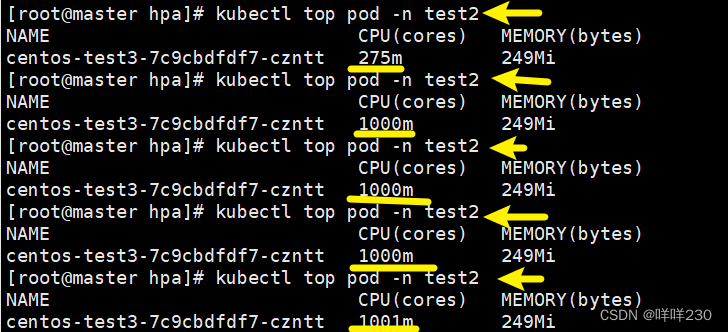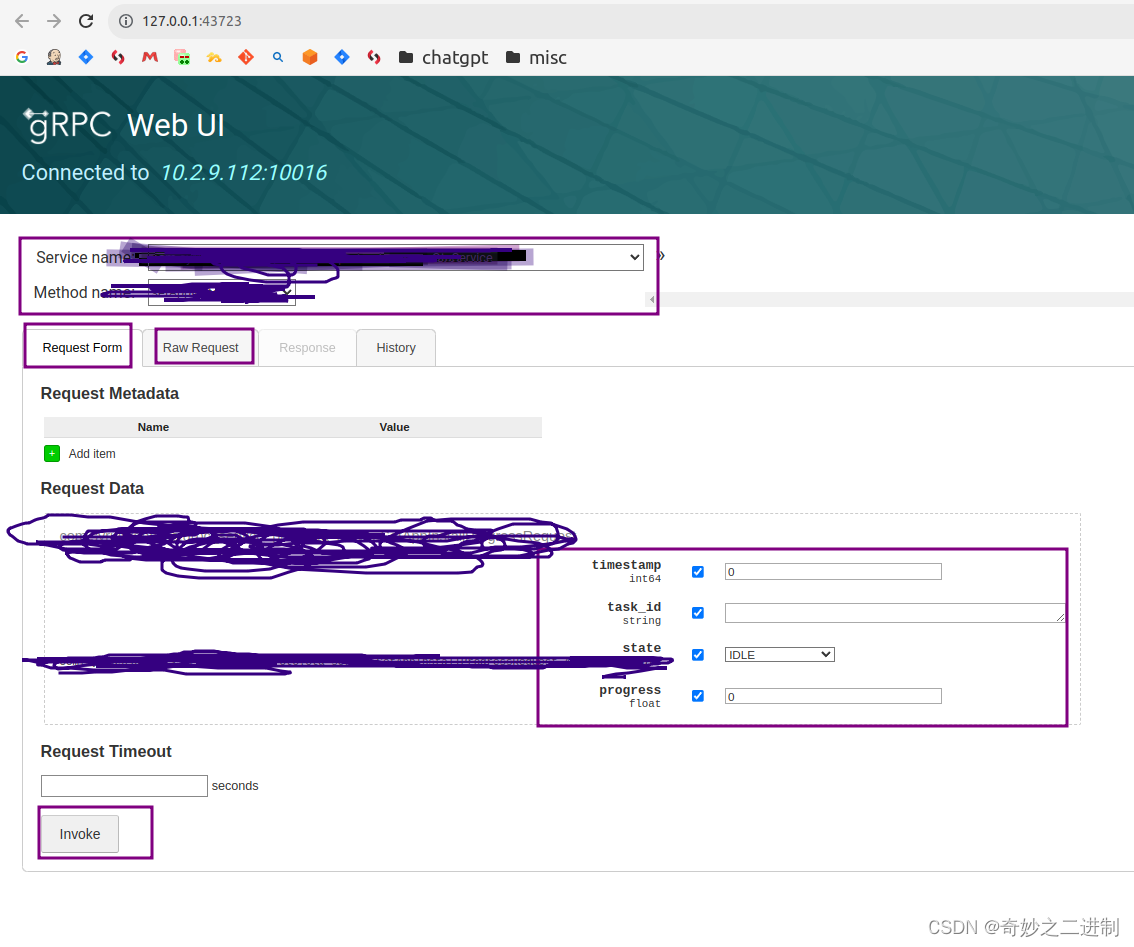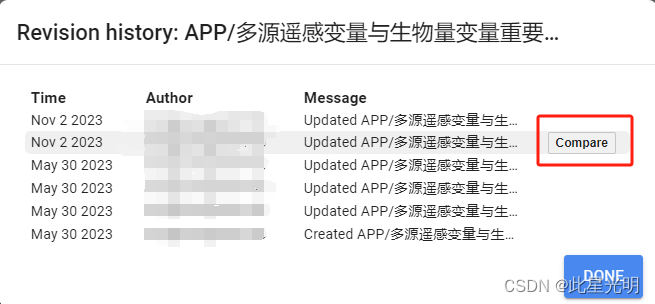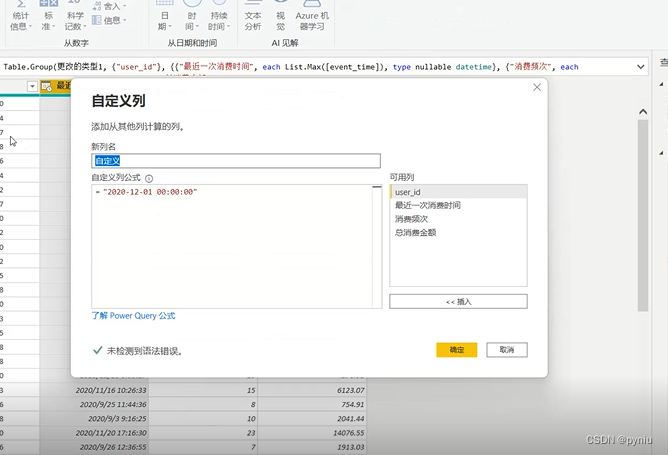「发表于知乎专栏《移动端算法优化》」
本篇以 HVX 的开发环境配置以及应用实例编译测试为主进行讲述。
🎬个人简介:一个全栈工程师的升级之路!
📋个人专栏:高性能(HPC)开发基础教程
🎀CSDN主页 发狂的小花
🌄人生秘诀:学习的本质就是极致重复!
目录
一、Hexagon SDK 下载和安装
A. SDK 下载
B. SDK 安装
C. SDK 目录介绍
D. Android NDK
二、Hexagon SDK 手机端运行
A. 工程编译
B. 签名
C. 算法实机测试
三、 算法实例分析
A. SDK 工程目录结构
B. CPU 端算法流程
C. DSP 端算法流程:
四、总结
本篇以 HVX 的开发环境配置以及应用实例编译测试为主进行讲述。
一、Hexagon SDK 下载和安装
HVX 开发工具分为 windows 和 Ubuntu环境,本专栏主要以 Ubuntu 环境为主进行介绍。
HVX 的开发工具是 Hexagon SDK(文章基于版本 Ubuntu 20.04 进行演示)。
A. SDK 下载
- 高通开发者官网 下载 SDK 安装包(hexagon_sdk_lnx_3_5_installer_00006_1.zip),文章基于 SDK3.5.4 版本进行介绍。
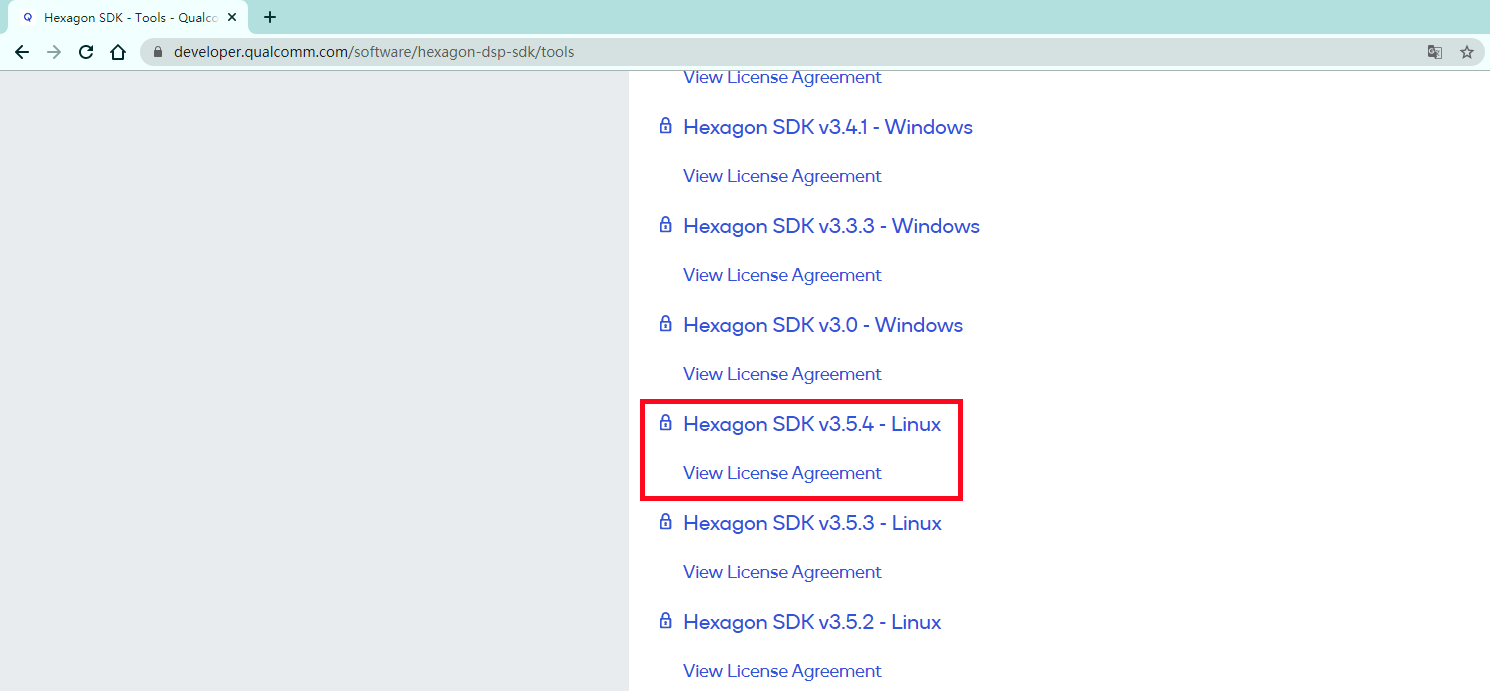
下载官网示意图
B. SDK 安装
# 解压安装包 hexagon_sdk_lnx_3_5_installer_00006_1.zip
# 在解压后的目录下进行如下操作
sudo chmod a+x ./qualcomm_hexagon_sdk_3_5_4_eval.bin
./qualcomm_hexagon_sdk_3_5_4_eval.binC. SDK 目录介绍
- SDK 根目录

hexagon_sdk 目录
| 文件夹 | 描述 |
|---|---|
| build | 编译所需的编译脚本文件 |
| docs | HVX 开发相关说明文档 |
| examples | SDK 例子,HVX 样例位于 common 文件夹 |
| incs | SDK 头文件目录,包含 HVX 函数及指令等头文件 |
| libs | SDK 必需库文件目录,包含 HVX 开发运行所涉及的必备库及部分实现代码,例如 dspcv,fastcv,hexagon_nn 等 |
| scripts | 常用脚本目录 |
| setup_sdk_env.source | 环境变量设置脚本 |
| tools | 常用工具集合,包含 ndk,qaic 及签名工具(elfsigner)等 |
- tools 目录

hexagon_sdk tools 目录
- tools/HEXAGON_Tools 目录

hexagon_sdk tools HEXAGON_Tools 目录
| 功能 | 路径 |
|---|---|
| HVX 模拟器仿真样例 | ${HVX_SDK_PATH}\tools\HEXAGON_Tools\8.3.07\Examples\HVX |
| DSP 开发手册文档 | ${HVX_SDK_PATH}\tools\HEXAGON_Tools\8.3.07\Documents\Hexagon_Document_Bundle.pdf |
D. Android NDK
HVX SDK 需要依赖 Andriod NDK 来进行编译测试,NDK 需放置于${HVX_SDK_PATH}/tools 目录,Android NDK 需要开发者下载配置。
Android NDK 下载,文章中使用 Linux 版本 android-ndk-r19c。(3.5.4版本 SDK 使用 android-ndk-r19c 即可。
二、Hexagon SDK 手机端运行
该部分以 ${HVX_SDK_PATH}/examples/common/gaussian7x7 为例进行说明。
A. 工程编译
- 设置环境变量:
cd ${HVX_SDK_PATH}
source setup_sdk_env.source- Andorid 端应用编译:
cd ${HVX_SDK_PATH}/examples/common/gaussian7x7
make tree V=android_Release_aarch64 CDSP_FLAG=1Android 端可执行程序 位于${HVX_SDK_PATH}/examples/common/gaussian7x7/android_Release_aarch64/ship/ gaussian7x7 目录
- CDSP 端应用编译:
make tree V=hexagon_Release_dynamic_toolv83_v66 VERBOSE=1CDSP 端算法 libgaussian7x7_skel.so 库位于${HVX_SDK_PATH}/examples/common/gaussian7x7/hexagon_Release_dynamic_toolv83_v68/ship/libgaussian7x7_skel.so
相关编译选项解释:
| toolv83 | 表示 tools 版本是 8.3 |
|---|---|
| V66 | 表示 DSP 架构版本是 V66(SM8150, SM8250 使用 V66, SM8350 使用 V68) |
| CDSP_FLAG=1 | 表示引用加载至 CDSP 端运行。SOC 中存在多个 DSP(如 ADSP,CDSP 等),编译时需显式指定 |
B. 签名
手机系统中存在安全及认证机制,CDSP 库文件需要进行签名认证,以确保可以被正确加载运行。
- 签名方法:
签名方法通常有两种:开发签名和量产签名。(sm8150 之后,可以使用 Unsiged PD 方式进行算法验证测试,但部分硬件资源使用受限)
① 开发签名:
应用计算法处在开发阶段(Debug Fuse Enabled on的阶段)时,可以采用开发签名进行调试。
开发签名需要获取 设备端的序列号,然后生成相应的签名库文件 Testsig.so。
- 获取序列号:
adb wait-for-device root
adb remount
adb push ${HVX_SDK_PATH}/3.5.4/tools/elfsigner/getserial/CDSP/android_Release/getserial /data
adb shell chmod 777 /data/getserial
adb shell /data/getserial 如果getserial 失败了, 用下面的指令:
adb shell cat /sys/devices/soc0/serial_number //这里返回的是十进制,需要转化成十六进制- 根据序列号生成 testsig.so 开发签名库
cd ${HVX_SDK_PATH}/tools/elfsigner/
elfsigner.py -t 0xXXXXXXXX
#0xXXXXXXXX为前面获取的序列号转换成十六进制的值。- 将签名库 testsig.so push 至手机端:
adb wait-for-device root
adb remount
adb shell mkdir -p /vendor/lib/rfsa/adsp#testsig-0x6E07C1CE.so 为根据测试机序列号生成的开发签名库
adb push ${HVX_SDK_PATH}/tools/elfsigner/output/testsig-0x6E07C1CE.so /vendor/lib/rfsa/adsp/ ②量产签名:
量产签名主要用于批量生产时签名,需要对 DSP firmware 进行重新编译 。firmware 编译过程中会提取指定目录下算法库文件的哈希信息,然后存储于系统中,运行时会进行检测。(该方法需要针对每次算法调整都做签名)
③Unsiged PD:
从 8150 开始,增加 Unsiged PD feature,即在 host 端进行 CDSP 初始化时开启 unsiged PD 功能。
该方式可除部分硬件资源使用受限外,对于开发者而言更加便利。
// Unsigned PD
if (1 == UNSIGNED_PD)
{if (remote_session_control){struct remote_rpc_control_unsigned_module data;data.enable = 1;data.domain = CDSP_DOMAIN_ID;retVal = remote_session_control(DSPRPC_CONTROL_UNSIGNED_MODULE, (void*)&data, sizeof(data));printf("remote_session_control returned %d for configuring unsigned PD.\n", retVal);}else{printf("Unsigned PD not supported on this device.\n");}
}
C. 算法实机测试
首先将编译生成的测试程序及库文件 push 至测试机中,该示例的测试应用编译路径为 ${HVX_SDK_PATH}/examples/common/gaussian7x7
- push Android 端测试程序
adb wait-for-device root
adb remount
#进入gaussian7x7例子目录
cd ${HVX_SDK_PATH}/examples/common/gaussian7x7
adb push android_Release_aarch64/ship/gaussian7x7 /vendor/bin/
adb shell chmod +x /vendor/bin/gaussian7x7- push DSP 端算法库文件
adb push hexagon_Release_dynamic_toolv83_v66/ship/libgaussian7x7_skel.so /vendor/lib/rfsa/adsp/- 运行测试
adb shell
cd /vendor/bin
./gaussian7x7执行输出如下:

运行测试结果
上述为手机端运行测试流程,基于 hexagon-sim模拟器的算法运行测试会在后续章节进行介绍。
三、 算法实例分析
继续 gaussian7x7(${HVX_SDK_PATH}/examples/common/gaussian7x7)为例进行说明。
程序代码、编译文件和运行过程。
A. SDK 工程目录结构

- asm_src:算法 HVX 汇编代码实现
- inc:IDL 文件
- src:CPU 侧代码实现和算法 DSP 侧实现(包含HVX Intrinsic代码)。DSP 侧代码提供了 HVX 汇编及 HVX Intrinsic 两种代码实现)。
- android.min:CPU 侧代码编译的 makefile 配置文件
- hexagon.min:DSP 侧代码编译的 makefile 配置文件
处理器间(CPU,DSP)通信由 Fastrpc 完成。算法调用过程解析通过 idl 编译生成的函数接口映射来处理。
- IDL 映射文件
inc/gaussian7x7.idl 为该例程的映射文件,用来定义 CPU 和 DSP 同步使用的接口,包括函数、结构体等。
RPC 调用过程需要调用反射机制实现,HVX 的调用反射基于 IDL 来实现,使用 IDL 来定义调用接口,以使 CPU 能完成 DSP 的函数调用。

编译器根据 idl 文件编译生成 gaussian7x7.h、gaussian7x7_stub.c 和gaussian7x7_skel.c 三个文件。
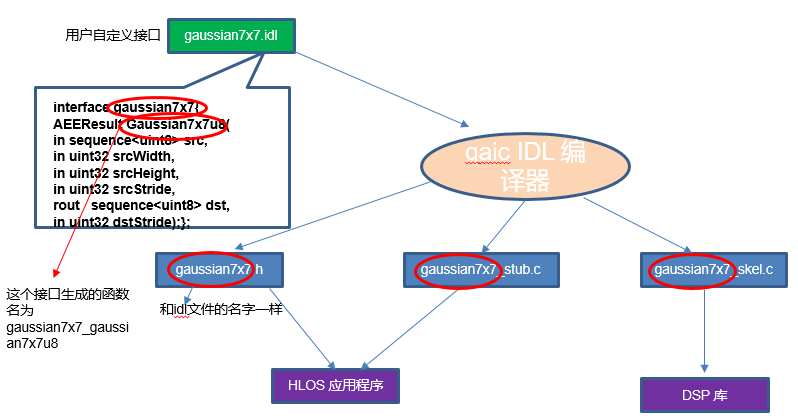
下面介绍一下gaussian7x7的idl定义:
AEEResult Gaussian7x7u8
( in sequence<uint8> src, // input buffer of unsigned 8-bit valuesin uint32 srcWidth, // width of region of interest contained in src image in uint32 srcHeight, // height of region of interest contained in src imagein uint32 srcStride, // stride of the src image rout sequence<uint8> dst, // output buffer of unsigned 8-bit values in uint32 dstStride, // stride of the dst image in int32 LOOPS, // number of times to iterate in int32 wakeupOnly, // flag to skip processing inrout int32 dspUsec, // profiling result in uSec inrout int32 dspCyc // profiling result in cycles
);上述代码为 gaussian7x7 的接口定义:
- Sequence为表示数组参数,转义接口为 data 指针及 数组 size;
in 表示为参数为输入属性,生成为 const 类型。
因此 in sequence<uint8> src 对应的接口参数为 const uint8* imgSrc, int srcLen;
- rout sequence<uint8> dst 中 rout 表示输出属性,生成对应的接口参数为 uint8* imgDst, int dstLen。
- in uint32 srcWidth 生成对应的接口参数为 uint32 srcWidth
- rout int32 dspUsec 生成对应的接口参数为 int32* dspUsec
生成三个文件位于 android_Release_aarch64 和 hexagon_Release_dynamic_toolv83_v66 文件夹内,如下图所示


在编程过程中, CPU 端会将 gaussian7x7.h 和 gaussian7x7_stub.c 代码编译后链接至 CPU 端的应用程序,DSP 端会将 gaussian7x7.h 和 gaussian7x7_skel.c 代码编译后链接生成 DSP 端运行库。
基于 IDL 生成函数接口如下,位于 gaussian7x7.h 中
QAIC_HEADER_EXPORT AEEResult __QAIC_HEADER(benchmark_gaussian7x7)(remote_handle64 _h, const uint8* src, int srcLen, uint32 srcWidth, uint32 srcHeight, uint32 srcStride, uint8* dst, int dstLen, uint32 dstStride, int32 LOOPS, int32 wakeupOnly, int32* dspUsec, int32* dspCyc) __QAIC_HEADER_ATTRIBUTE;B. CPU 端算法流程
CPU 端的流程图如下(基于 ${HVX_SDK_PATH}/examples /common /gaussian7x7/gaussian7x7.c):

- 通常在硬件设备和用户空间共享数据时,会基于 ION(后续 DMA BUF Heap)实现共享大尺寸连续物理内存,以减少内存拷贝开销实现 zero copy。该例程中使用 rpcmem_init 函数进行初始化(sm8350不再需要 rpcmem 初始化调用)
rpcmem_init();- 初始化DSP,设置时钟,带宽等参数。
// call dspCV_initQ6_with_attributes() to bump up Q6 clock frequency
// Since this app is not real-time, and can fully load the DSP clock & bus resources
// throughout its lifetime, vote for the maximum available MIPS & BW.
dspCV_Attribute attrib[] =
{{DSP_TOTAL_MCPS, 1000}, // Slightly more MCPS than are available on current targets{DSP_MCPS_PER_THREAD, 500}, // drive the clock to MAX on known targets{PEAK_BUS_BANDWIDTH_MBPS, 12000}, // 12 GB/sec is slightly higher than the max realistic max BW on existing targets.{BUS_USAGE_PERCENT, 100}, // This app is non-real time, and constantly reading/writing memory
};retVal = dspCV_initQ6_with_attributes(attrib, sizeof(attrib)/sizeof(attrib[0]));
printf("return value from dspCV_initQ6() : %d \n", retVal);
VERIFY(0 == retVal);- 基于 rpcmem 申请 buf,高通内部使用 ION 进行硬件设备内存共享,可以有效江都 Fastrpc 通信时间,基于常规堆内存分配,会引发数据拷贝操作。
// allocate ion buffers on CDSP side
VERIFY(0 != (src = (uint8_t*)rpcmem_alloc(ION_HEAP_ID_SYSTEM, RPCMEM_DEFAULT_FLAGS, srcSize)));
printf("src - allocated %d\n", (int)srcSize);
VERIFY(0 != (dst = (uint8_t*)rpcmem_alloc(ION_HEAP_ID_SYSTEM, RPCMEM_DEFAULT_FLAGS, dstSize)));
printf("dst - allocated %d\n", (int)dstSize);- 生成伪随机图像数据
// populate src buffer (with a simple pattern)
for (j = 0; j < srcHeight; j++)
{uint8_t *ptr = &src[j * srcStride];for (i = 0; i < srcWidth; i++){*ptr++ = i + j; // some incrementing pattern fill}
}- 进行算法调用测试
unsigned long long t1 = GetTime();
for (i = 0; i < LOOPS; i++)
{// For HVX case, note that src, srcStride, dst, dstStride all must be multiples of 128 bytes.// The HVX code for this example function does not handle unaligned inputs.retVal = gaussian7x7_Gaussian7x7u8(src, srcSize, srcWidth, srcHeight, srcStride, dst, dstSize, dstStride);
}unsigned long long t2 = GetTime();
VERIFY(0 == retVal);
#ifdef __hexagon__
printf("run time of gaussian7x7_Gaussian7x7u8: %llu PCycles (from %llu-%llu) for %d iterations\n", t2-t1, t1, t2, LOOPS);
printf("To apply timefilter to profiling results, add this to simulation cmd line: --dsp_clock 800 --timefilter_ns %d-%d\n", (int)(t1/0.8), (int)(t2/0.8));
#else
printf("run time of gaussian7x7_Gaussian7x7u8: %llu microseconds for %d iterations\n", t2-t1, LOOPS);
#endif
printf("return value from gaussian7x7_Gaussian7x7u8: %d \n", retVal);// validate results
Gaussian7x7u8_ref(src, srcWidth, srcHeight, srcStride, ref, dstStride);- 运算结果比较
int bitexactErrors = 0;
printf( "Checking for bit-exact errors... \n");
for (j = 3; j < dstHeight-3; j++)
{for (i = 3; i < dstWidth-3; i++){if (ref[j * dstStride + i] != dst[j * dstStride + i]){bitexactErrors++;}}
}
printf( "Number of bit-exact errors: %d \n", bitexactErrors);
VERIFY(0 == bitexactErrors);- 释放资源
if(src)
{ rpcmem_free(src);
}
if(dst)
{ rpcmem_free(dst);
}
// free ion buffers
rpcmem_deinit();if(ref)
{free(ref);
}printf("calling dspCV_deinitQ6()... \n");
retVal = dspCV_deinitQ6();
printf("return value from dspCV_deinitQ6(): %d \n", retVal);if (0 == (retVal | nErr))
{printf("- success\n");return 0;
}
else
{printf("- failure\n");return -1;
}C. DSP 端算法流程:
DSP 端的流程图如下(基于 ${HVX_SDK_PATH}/examples /common /gaussian7x7/gaussian7x7_imp.c):

- 回调函数的流程图如下

DSP 端函数接口如下:
AEEResult gaussian7x7_Gaussian7x7u8(const uint8* imgSrc, int srcLen, uint32 srcWidth, uint32 srcHeight, uint32 srcStride, uint8* imgDst, int dstLen, uint32 dstStride) - 系统架构及参数有效性检测
// only supporting HVX version in this example.
#if (__HEXAGON_ARCH__ < 60)
return AEE_EUNSUPPORTED;
#endif// record start time (in both microseconds and pcycles) for profiling
#ifdef PROFILING_ON
uint64 startTime = HAP_perf_get_time_us();
uint64 startCycles = HAP_perf_get_pcycles();
#endif
// Only supporting 128-byte aligned!!
if (!(imgSrc && imgDst && ((((uint32)imgSrc | (uint32)imgDst | srcWidth | srcStride | dstStride) & 127) == 0)&& (srcHeight >= 7)))
{return AEE_EBADPARM;
}以上是异常检测的代码实现,包括有:
① 如果 DSP 版本小于 60,没有 HVX 硬件,退出。
② 如果 src,dst 地址是NULL,退出。
③ 如果 src,dst 地址不对齐,退出,因为代码实现(Gaussian7x7)只支持128对齐的数据。
④ 如果输入图像高度小于7,退出,Gaussian7x7代码无法正确运行。
- 初始化并发参数
// Determine if it is safe (from an audio/voice/camera concurrency perspective) to run a compute function now
dspCV_ConcurrencyAttribute attrib[1] =
{{COMPUTE_RECOMMENDATION, 0}, // query for compute concurrency recommendation
};
dspCV_concurrency_query(attrib, 1);
if (COMPUTE_RECOMMENDATION_NOT_OK == attrib[0].value)
{// return error back to applicationreturn AEE_EBADSTATE;
}// Determine if HVX is available and in what configuration
dspCV_hvx_config_t hvxInfo = {0};- 设置 HVX 运行模式为 DSPCV_HVX_MODE_128B,早期的 HVX 有 128B 和 64B 两种模式,sm845之后只有 128B 模式
// for sake of example, assume only 128B implementation is available (i.e. intrinsics)
hvxInfo.mode = DSPCV_HVX_MODE_128B;- 进行多线程运行设置
// Call utility function to prepare for a multi-threaded HVX computation sequence.
dspCV_hvx_prepare_mt_job(&hvxInfo);// Check results and react accordingly. Treat failure to acquire HVX as a failure
if (hvxInfo.numUnits <= 0)
{dspCV_hvx_cleanup_mt_job(&hvxInfo);return AEE_EFAILED;
}int numWorkers = hvxInfo.numThreads;
// split src image into horizontal stripes, for multi-threading.
dspCV_worker_job_t job;
dspCV_synctoken_t token;// init the synchronization token for this dispatch.
dspCV_worker_pool_synctoken_init(&token, numWorkers);创建线程,以 gaussian7x7_callback 为回调函数。主线程使用 worker_pool_synctoken_wait(&token); 进行线程同步,该函数基于下述dspCV_worker_pool_synctoken_jobdone 来同步任务完成状态。
unsigned int i;
for (i = 0; i < numWorkers; i++)
{// for multi-threaded impl, use this line.(void) dspCV_worker_pool_submit(job);// This line can be used instead of the above to directly invoke the // callback function without dispatching to the worker pool. //job.fptr(job.dptr);
}
dspCV_worker_pool_synctoken_wait(&token);- 回调函数(gaussian7x7_callback), 使用
dspCV_hvx_lock锁 HVX 资源;使用dspCV_worker_pool_synctoken_jobdone函数结束子线程任务运算。
static void gaussian7x7_callback(void* data)
{gaussian7x7_callback_t *dptr = (gaussian7x7_callback_t*)data;// lock HVX, 128B mode preferred. Main thread has already confirmed HVX reservation.int lockResult = dspCV_hvx_lock(DSPCV_HVX_MODE_128B, 0);// 64B mode is also acceptableif (0 > lockResult) {lockResult = dspCV_hvx_lock(DSPCV_HVX_MODE_64B, 0);}if (0 > lockResult){// this example doesn't handle cases where HVX could not be lockedFARF(ERROR,"Warning - HVX is reserved but could not be locked. Worker thread bailing!");return;}// ....// ....// If HVX was locked, unlock it.dspCV_hvx_unlock();// release multi-threading job tokendspCV_worker_pool_synctoken_jobdone(dptr->token);
}- 回调函数内部循环体
循环体中通过 unsigned int jobCount = worker_pool_atomic_inc_return(&(dptr->jobCount)) - 1; 通过原子计数来计算当前任务的执行数据地址偏移。
算法实现主要位于 Gaussian7x7u8PerRow 函数中,函数采用逐行实现的思路。
// atomically add 1 to the job count to claim a stripe.
unsigned int jobCount = dspCV_atomic_inc_return(&(dptr->jobCount)) - 1;// if all horizontal stripes have been claimed for processing, break out and exit the callback
if (jobCount * dptr->rowsPerJob >= dptr->height)
{break;
}// Set pointers to appropriate line of image for this stripe
unsigned char *src = dptr->src + (dptr->srcStride * dptr->rowsPerJob * jobCount);
unsigned char *dst = dptr->dst + (dptr->dstStride * dptr->rowsPerJob * jobCount);
// ...
Gaussian7x7u8PerRow(pSrc, dptr->srcWidth, dst, lockResult);
//....- 其他
DSP 端进行数据处理前,可以通过 L2 预取操作以加速数据的存取。
数据预取操作会使用硬件提前完成数据从 DDR 到 L2 cache 的搬运操作,有效提高数据 load 的效率。
通常会采用 Ping-Pong 的思想进行数据预取,DSP 侧使用 L2fetch 函数在当前循环操作中预取下一次循环的数据,以使得数据搬运和数据运行并行化。
// initiate L2 prefetch (first 7 rows)
long long L2FETCH_PARA = CreateL2pfParam(dptr->srcStride, dptr->srcWidth, 7, 0);
L2fetch( (unsigned int)src, L2FETCH_PARA);
// next prefetches will just add 1 row
L2FETCH_PARA = CreateL2pfParam(dptr->srcStride, dptr->srcWidth, 1, 0);四、总结
通过前面的介绍我们了解到了高通Hexagon SDK Linux/windows环境下的下载和安装,工程编译,手机签名以及工程在手机上的运行,同时还有实例的分析,这些都是工程的实际运用,需要自己多去试验。hexagon-sim模拟器的使用在后续篇章会详细介绍。
期望大家都能有所收获。
未完待续。。。
🌈我的分享也就到此结束啦🌈
如果我的分享也能对你有帮助,那就太好了!
若有不足,还请大家多多指正,我们一起学习交流!
📢未来的富豪们:点赞👍→收藏⭐→关注🔍,如果能评论下就太惊喜了!
感谢大家的观看和支持!最后,☺祝愿大家每天有钱赚!!!欢迎关注、关注!


